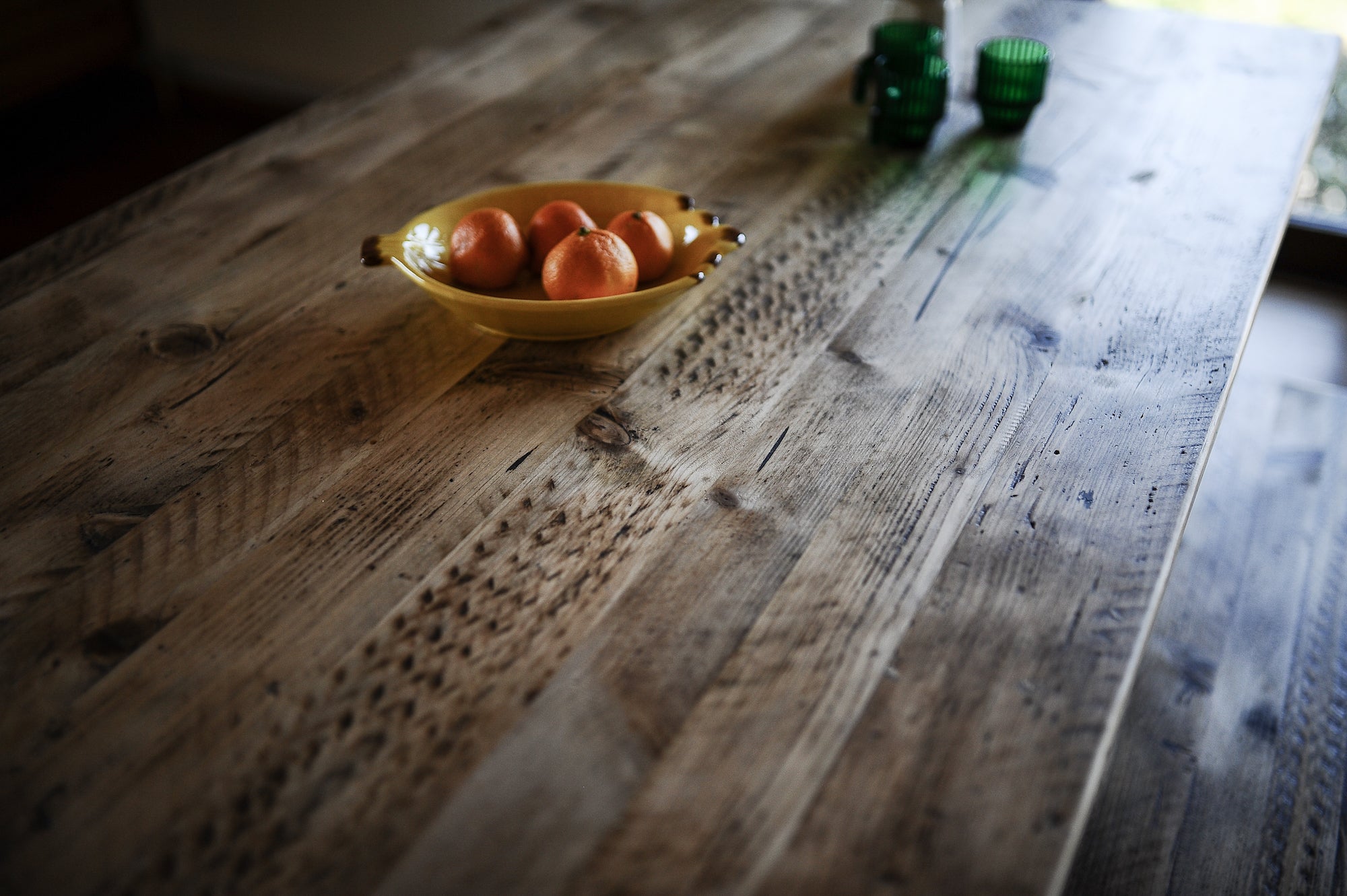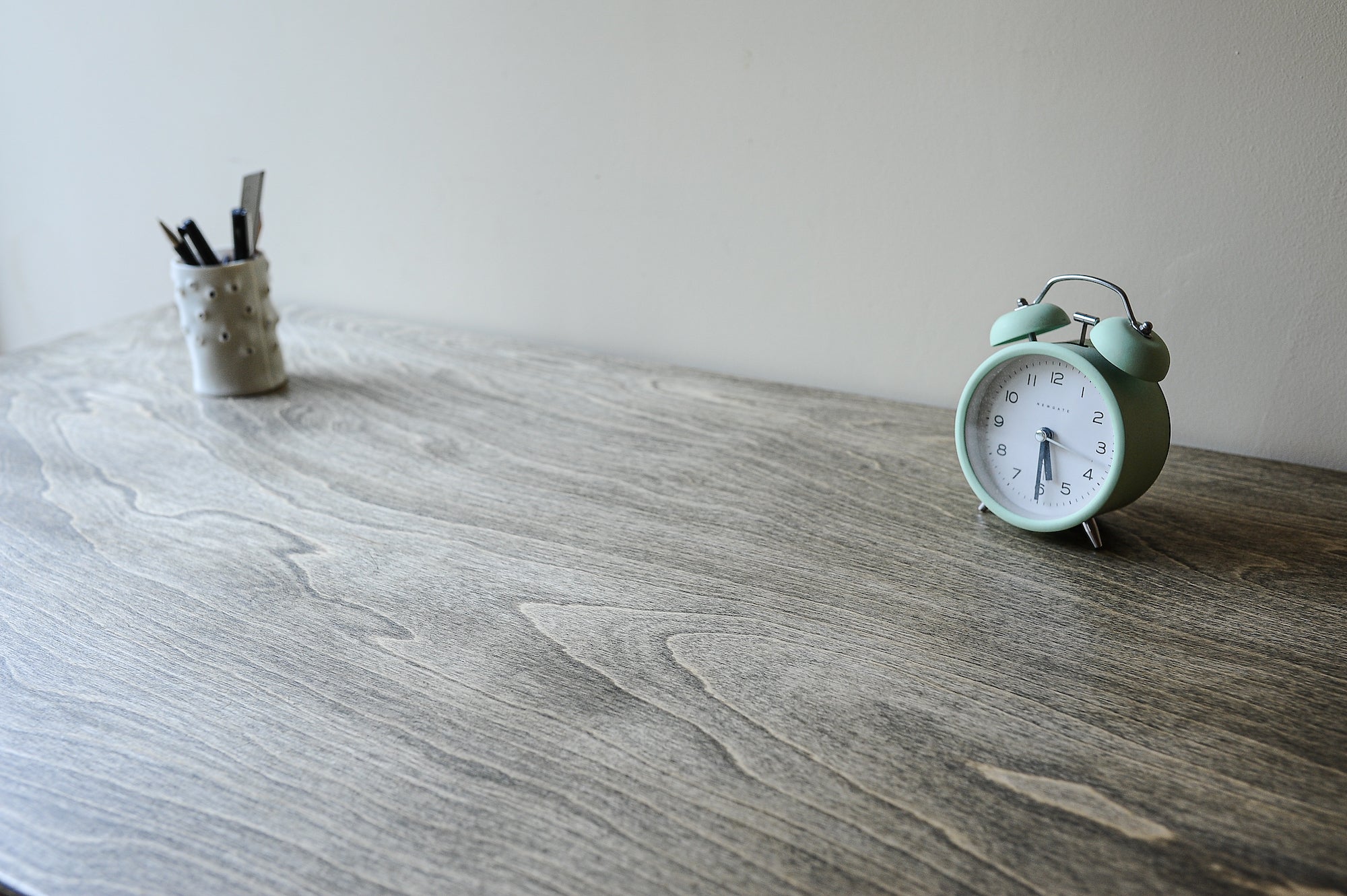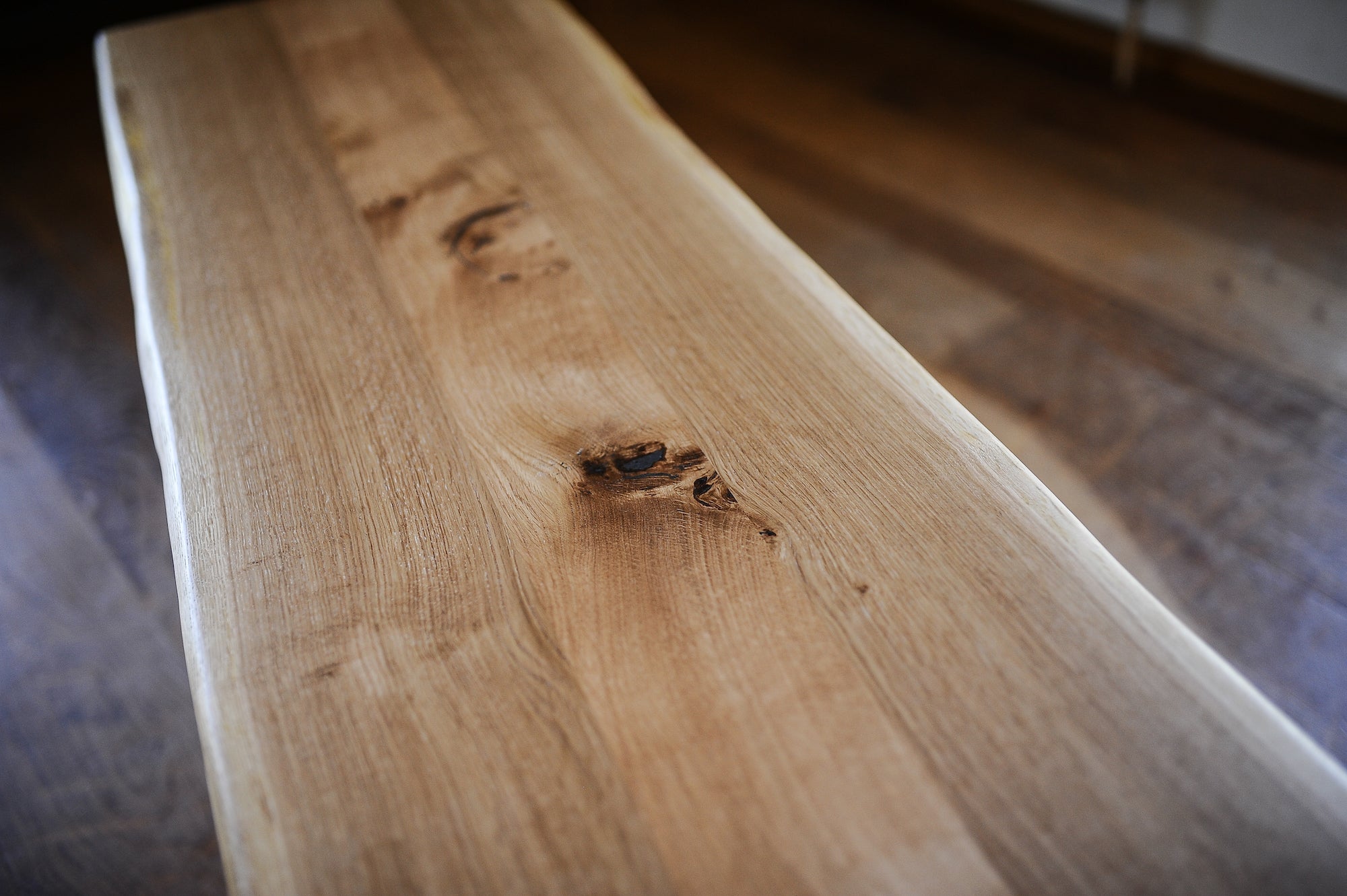
Perfect imperfections: 10 features that add character to scaffold furniture
1. Misshapen boards
While scaffolding boards are cut to a standard size (3.8cm x 22.5cm), once they have done a few tough seasons with a scaffolding yard, they will almost always be warped or twisted to some degree. This presents an exciting challenge when making a piece of furniture and draws out the artistic ability of the craftsperson.
You will often come across sections where a chunk has been taken out, making the board thinner in that area. Much of the skill of crafting scaffold furniture is making sure the boards selected are strong enough in the right areas to perform their primary function.
2. Paint stains
In the same way farmers spray the coats of their livestock to keep them safe from theft and loss, scaffolding yards often spray their boards with a distinct colour. Then, even if the metal identification plates are removed, they can prove that a board belongs to them.
Patches of coloured paint are therefore a common feature in scaffold furniture, and add to the character of each piece.
3. Strapping/bracing marks
While scaffold board timber is designed to be strong and durable (after all, they have to support hefty builders and roofers at height!), they are also reinforced by metal strapping (aka bracing).
When these braces are removed, they leave an indentation in the wood. Although these dents are usually shallow, they can affect the evenness of a piece of scaffold furniture, so craftspeople will make sure they are only present in non-structural parts.
4. End band nail holes
The main way scaffolding yards protect their boards from wandering off is by affixing a metal endplate on the end of each one. This clearly states the name of the yard.
These are usually attached using nails, which means that you will often find nail holes where the end of the boards are exposed. So don't worry, it's not woodworm!
5. Split wood
It may seem strange to buy scaffold furniture with splits in it, but this is all part of the fun of using wood that has a working history. A skilled craftsperson will know which splits are cosmetic, and can be left 'as is' and which may need to be reinforced using specialist joinery techniques.
6. Rust stains
Wherever metal has been in contact with wood, there is a possibility of red-brown rust stains. These are most common on the ends and edges of scaffolding boards where the banding and end plates have previously been fitted..
7. Knots
Scaffolding boards display a lot of variability when it comes to the size, colour and number of knots along their length. Some boards will be relatively free of knots, some will have one or two distinctive knots and others will be covered in them, either evenly spread or in patches.
Knots, like freckles on a face, are seen as very attractive by some scaffold furniture buyers, while others prefer a smooth complexion. As they say, beauty is always in the eye of the beholder.
8. Saw marks
Some scaffold boards display the unmistakeable gash marks of contact with a saw. These scars are reminders of the board's authentic working life, and contribute to the industrial aesthetic of a piece of scaffold furniture.
9. Colour variation
Scaffolding boards are sourced from different types of timber, so if your piece of furniture is crafted from multiple boards, you can expect a colour mismatch.
While it is possible to selectively stain boards to get a more even hue, many buyers prefer the character of colour variation.
10. Burn marks
While some furniture makers deliberately create a 'charred' effect, we're talking about the natural burn marks that arise from scaffold boards that have been too close to a fire or have had burning substances dropped on to them.
We may never know the real story behind a burning board, but it definitely adds an edge to your furniture.
Have you been bitten by the scaffold board bug?
You will find plenty of examples of reclaimed scaffold furniture on all of our category pages. If you want to read more about the sustainability benefits of using reclaimed scaffolding boards, visit our Reclaimed & Recycled Wood page.



Leave a comment
This site is protected by hCaptcha and the hCaptcha Privacy Policy and Terms of Service apply.